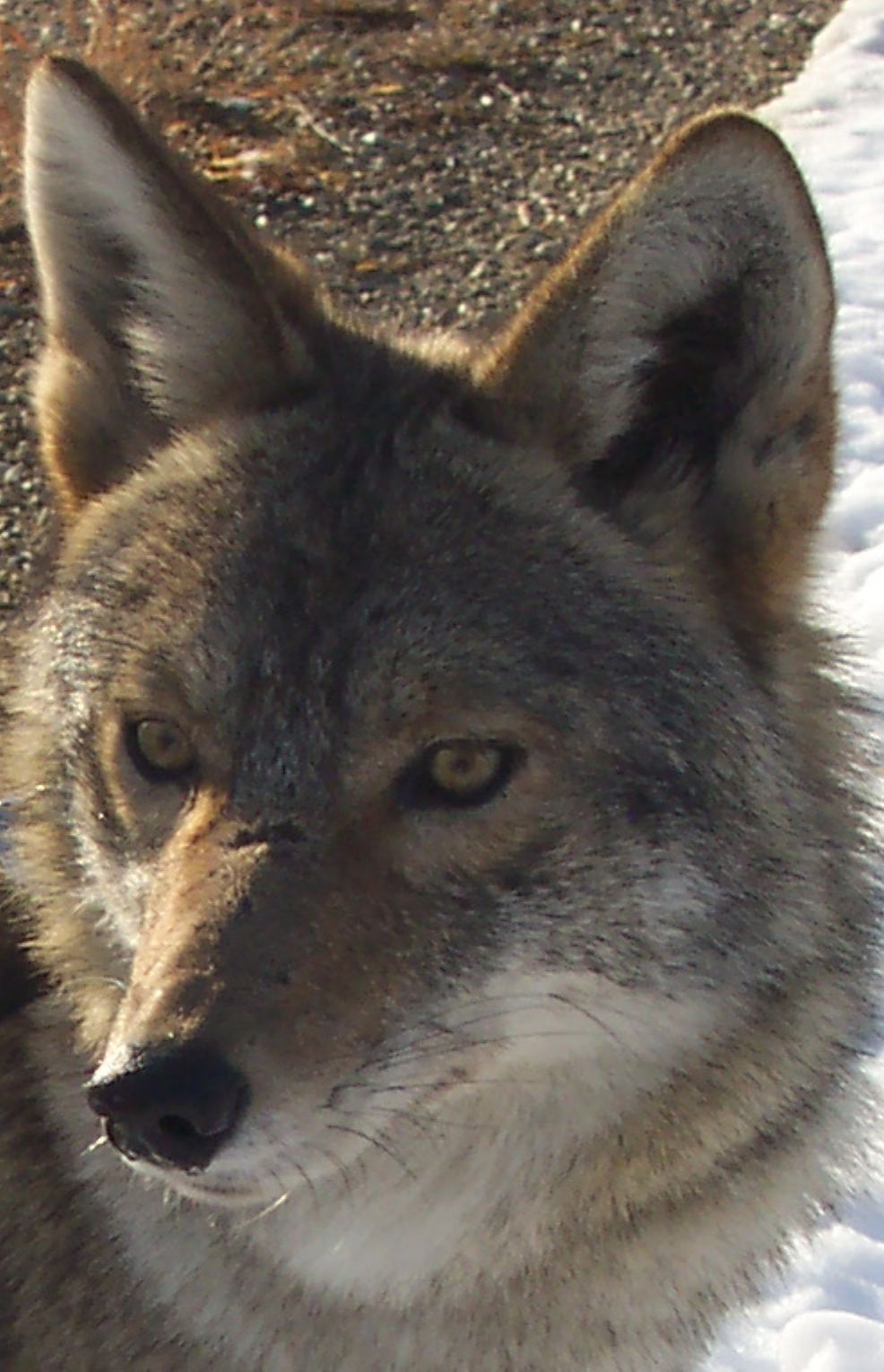https://www.google.com/url?rct=j&sa=t&url=http://www.athensmessenger.com/news/coyote-success-comes-from-its-intelligence-ohio-wildlife-biologist-says/article_a5c7b865-6e71-5899-81a3-ebfb523a2f50.html&ct=ga&cd=CAEYAioTNjY0NDk3MDM4NDcyMDUyNDMxOTIaZjUwOWE2YjQ0ZTNkYzY4OTpjb206ZW46VVM&usg=AFQjCNH8GciS9Cwousv_wEAa5lGhj5ltrQ

Coyote success comes from its intelligence, Ohio wildlife biologist says

They are smart, resourceful, wary of humans, and family and group oriented — but not malevolent.
For those reasons, coyotes have been highly successful at adapting to Ohio’s wooded and urban areas over the past decades and their continued success includes expanding throughout southeastern Ohio, said the state’s lead wildlife biologist on fur-bearing mammals, Suzanne Prange.
Even when hunted, coyotes will simply continue to multiply in ample numbers to make up the difference. There are usually “transient” coyotes waiting to come into a home range occupied by an alpha male and female that bear litters of up to a dozen pups.
“(Hunting) won’t knock their numbers down,” said Prange, who works out of the Ohio Division of Wildlife District 4 office in Athens. “They’re incredibly adaptable and very hard to catch. They’re just very smart and good at eluding hunters and trappers.
Coyote in Ohio woodland
Once known primarily as a western prairie mammal, coyotes have moved eastward over the past several decades. That makes them one of the most successful animals in the United States at a time when other wildlife species such as red foxes and gray foxes are not faring well, Prange said.
Coyote in Ohio woodland
Once known primarily as a western prairie mammal, coyotes have moved eastward over the past several decades. That makes them one of the most successful animals in the United States at a time when other wildlife species such as red foxes and gray foxes are not faring well, Prange said.
“I’m sure there are coyotes in downtown Cleveland,” agreed Jim Hill, the Division of Wildlife District 4 supervisor. “They’re in all 88 counties in the state.”
For the past 26 years, the state Division of Wildlife has been working with bowhunters to produce annual reports. The reports detail how many times the bowhunters — whose season begins in September, and who are mainly hunting deer — spot different mammals such as raccoons, coyotes, opossums and skunks within 1,000-hour periods.
Since the 1990s when the Ohio Bowhunter Survey Reports began, the number of coyotes sighted per 1,000 hours has increased steadily although there was a slight drop from 2014 to 2015. Last year, there was an average of 14.7 coyotes sighted per 1,000 hours.
Prange said there are a few main reasons the coyote has done so well nationwide and moving east of the Mississippi River. Wolves, more dominant than coyotes and a main competitor for food out West, has declined in numbers due to human extirpation and is being hunted again after its de-listing from the Endangered Species list. That has allowed coyotes to move into areas they did not formerly occupy.
In addition, forested areas have declined due to human development of subdivisions and other residential areas, allowing coyotes to more easily move east.
“We pretty much said, ‘Come on over’ and opened the door for them,” Prange said. She added that she has not engaged in radio collar studies of coyotes in southeastern Ohio because there is no need; she focuses her studies on mammals such as foxes and muskrats that are declining.
Ohio Coyote family group
Ohio Coyote family group
Coyotes are also successful because they are omnivores. Hill referred to them as “glorified mousers” that mainly eat small mammals such as mice, chipmunks, squirrels, moles, and a type of rodent known as meadow voles. Although more active at night hunting within their home ranges, they also will hunt during the day as necessary to meet their caloric requirements.
‘They love paw paws. I’m surprised the Paw Paw Festival doesn’t have a coyote on its shirt,” she said.
Although coyotes may hunt fawns on occasion, coyote and deer populations mirror each other in numbers — they have young at the same time. Coyotes mainly eat rodents and are not responsible for areas where deer populations are lower, she said.
And they are, most of all, survivors.
“They can definitely recognize a threat,” Prange said. “I would say they are among the most persecuted and most successful mammals we have in North America. No matter what we do, they increase in numbers and in range.”
Because coyotes are hunters, Prange suggests taking some precautions with pets if coyotes are known to be in an area. She suggests flickering lights, such as motion-sensing lights, to dissuade them. She also suggests keeping cats inside, and if small dogs are one’s pets, do not chain them and keep an eye on them when outside.
If traps are placed in an area, coyotes will often take note of them and leave, Prange said.
Although there are few limits placed on hunting coyotes in Ohio, doing so does require a hunting license.
Watch a video of several Ohio Coyotes trying to kill a Buck Deer (click on this link below)
-------------------------------------------------------------------------------------------------------------
Even the larger Eastern Coyote(30-50 pounds) with family members in tow are not
the equivalent of a Wolf Pack in their ecological function as deer hunters.........Yes, the Coyotes
kill fawns,,,,,,,,,,,,and will take weakened deer when severe Winters occur, but the Coyote is still
primarily a small mammal hunter and opportunistic omnivore, much like us human animals
Watch a video of several Ohio Coyotes trying to kill a Buck Deer (click on this link below)















No comments:
Post a Comment